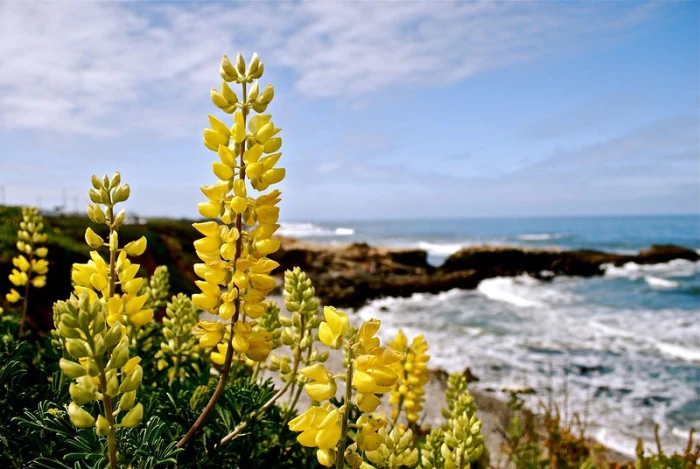Yellow Bush Lupine
(Lupinus arboreus)
Yellow Bush Lupine (Lupinus arboreus)
/
/

Miguel Vaca
CC BY 2.0
Image By:
Miguel Vaca
Recorded By:
Copyright:
CC BY 2.0
Copyright Notice:
Photo by: Miguel Vaca | License Type: CC BY 2.0 | License URL: https://creativecommons.org/licenses/by-sa/2.0/ | Uploader: Vacacion | Publisher: Flickr |


















































Estimated Native Range
Climate Requirements for Casas Adobes, Arizona
| This Plant | Your Site | Plant Suitability for Your Location | ||
|---|---|---|---|---|
| • Precipitation | 8" - 138" | 12" | Your precipitation may be insufficient for this plant. Irrigate N" / year. | Irrigate N" / year |
| • High Temp. | 57°F - 94°F | 100°F | Your summers may be too hot for this plant. | Too hot |
| • Low Temp. | 6°F - 60°F | 39°F | Your winter temperatures are normal for this plant | Excellent |
This plant should grow well at your location with about N inches per year (Y minutes per month) of irrigation.
Summary
Lupinus arboreus, commonly known as Yellow Bush Lupine, is an evergreen shrub native to coastal dunes and bluffs of central California. It can grow up to 2 meters (7 feet) tall in sheltered situations, but more typically reaches 1–1.5 meters (3–5 feet) in height. This species is adapted to a Mediterranean climate with mild, wet winters and dry summers, thriving in sandy, well-drained soils. Yellow Bush Lupine has a notable appearance with its silvery-green foliage and spikes of yellow or sometimes lilac to purple flowers, which bloom from late spring to early summer. The flowers are particularly showy, making it a favorite for ornamental use.
Yellow Bush Lupine is valued for its ability to stabilize sand dunes and its showy flowers, which attract pollinators such as bees and butterflies. It is often used in traditional and native plant gardens, as well as in wildlife gardens for its ecological benefits. While it requires minimal maintenance and is drought-tolerant, it is important to provide sharp drainage, especially when grown in non-native areas. It can be invasive outside its native range, so gardeners should consult local regulations before planting.CC BY-SA 4.0
Yellow Bush Lupine is valued for its ability to stabilize sand dunes and its showy flowers, which attract pollinators such as bees and butterflies. It is often used in traditional and native plant gardens, as well as in wildlife gardens for its ecological benefits. While it requires minimal maintenance and is drought-tolerant, it is important to provide sharp drainage, especially when grown in non-native areas. It can be invasive outside its native range, so gardeners should consult local regulations before planting.CC BY-SA 4.0
Plant Description
- Plant Type: Shrub
- Height: 5-8 feet
- Width: 5-8 feet
- Growth Rate: Moderate
- Flower Color: Yellow
- Flowering Season: Spring
- Leaf Retention: Evergreen
Growth Requirements
- Sun: Full Sun
- Water: Low
- Drainage: Fast, Medium
Common Uses
Bee Garden, Bird Garden, Butterfly Garden, Deer Resistant, Drought Tolerant, Erosion Control, Fire Resistant, Fragrant, Hummingbird Garden, Low Maintenance, Rabbit Resistant, Salt Tolerant, Showy Flowers
Natural Habitat
Coastal dunes and bluffs of central California
Other Names
Common Names: Tree Lupin , Coastal Bush Lupine , Tree Lupine , Bush Lupine , Baum-Lupine , Lupin En Arbre , Gul Busklupin
Scientific Names: Lupinus arboreus , Lupinus macrocarpus , Lupinus eximius , Lupinus fruticosus
GBIF Accepted Name: Lupinus arboreus Sims